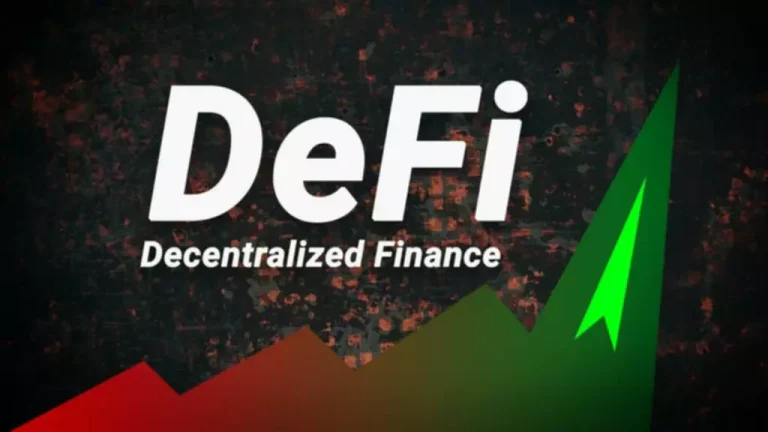Users & applications would migrate to a new, proof-of-stake Ethereum chain, known as Eth2. Those considering solo staking should have at least 32 ETH and a dedicated computer connected to the internet ~24/7. Some technical know-how is helpful, but easy-to-use tools now exist to help simplify this process. Despite having a population of just 1,400, until recently, Tokelau’s .tk domain had more users than any other country. Sophisticated analytics tools mine insights from data, optimizing operational processes across the enterprise.
Meanwhile, one specific node is selected as the “block proposer” for the current time slot. This node is responsible for building the new block of transactions and broadcasting it to the other nodes to be verified. Proof of work provides a lot of benefits, especially for a simple but extremely valuable cryptocurrency like Bitcoin. As a cryptocurrency’s value rises, more miners are enticed to join the network, increasing its power and security. Because of the computing power required, tampering with the blockchain of a valuable cryptocurrency is impossible for any individual or group. The minimum amount you can stake to become a validator is 32 ether (ETH), which was worth about $51,000 as of Wednesday afternoon, although individuals can join together in a staking pool to meet the requirement.
Large-scale mining companies have been forced to rethink their business models, while many miners are expected to pivot to other proof-of-work blockchains. Some of these, such as Ethereum Classic and ETHPoW, are hard forks of the Ethereum blockchain. The merge is one of a set of upgrades that should also make Ethereum faster and cheaper to use. Right now, Ethereum is beleaguered by slow transaction times and high costs.
Proof-of-stake will also be faster than proof-of-work as it can process over 100,000 transactions per second compared to the PoW’s 30 transactions per second. The proof-of-stake energy efficiency and wide distribution of infrastructure make the Ethereum blockchain more robust. Consensus mechanisms take place occupied by central authorities or gatekeepers that would have otherwise managed the record of transactions. The mechanism helps choose the participants that handle the lucrative task thanks to the crypto rewards offered to ensure that cheats don’t infiltrate the system.

The following provides an end-to-end explanation of how a transaction gets executed in Ethereum proof-of-stake. With the recent Merge now complete after years of work, Ethereum’s transition to Proof of Stake is now active. But the process as a whole is not complete, so its full impact is still not seen.
Calculate Your ETH Staking Rewards
Many of the major projects on Ethereum, including crypto exchange Coinbase, stablecoin companies Circle and Tether, and NFT projects Yuga Labs and OpenSea, had publicly supported Ethereum’s move to proof of stake. In addition to the environmental benefits, transaction fees would be lower. The battle was won before the Ethereum Foundation, the nonprofit that helps supervise the platform, pushed the red button.
- Popular cryptocurrency blockchain Ethereum has completed its long-awaited switch to proof-of-stake.
- Once a committee has been assigned to a block, one member at random is given the exclusive power to propose a new block of transactions.
- Contact us to discuss your project requirements and embark on a transformative journey with our blockchain development services.
- After you’ve installed the validator software on your computer, you’ll need to send at least 32 ETH to the Ethereum staking contract address.
- Validators who submit data with fraudulent transactions get punished by “slashing,” where their staked assets are sent to a wallet address that they or anyone else cannot access, making those assets useless forever.
With lower energy demands and a higher level of accessibility for everyday people to participate as validators, proof of stake has many attractive features that could bring it to the mainstream for blockchain security. The incentive against a malicious actor attempting to compromise a PoW blockchain is the cost of electricity required to generate the sufficient amount of computational energy to take over a majority hash rate. The combined computational power required for an individual to compromise a well-established PoW blockchain like Bitcoin or Ethereum would cost an extraordinary amount of money, and may not even exist. However, they pay their operating expenses like electricity and rent with fiat currency.
From mining to staking model
Slashing is a disciplinary system used by PoS protocols to penalize validators for any harmful or irresponsible behaviors. This usually involves the network deducting some of their security deposit (their initial staked coins). Major crypto exchanges, including Coinbase Global (COIN.O) and Binance, have said they will pause ether deposits and withdrawals during the merge. Users won’t need to do anything with their funds or digital wallets as part of the upgrade, they say. It’s also feasible for a staker to go rogue and approve incorrect transactions. As part of their planned transition to PoS, the Ethereum team has created the ‘Casper’ protocol, which will punish such rogue stakers by collecting their staked cryptocurrency and prohibiting them from ever staking again.
You can join validation pools using “liquid staking” which uses an ERC-20 token that represents your ETH. If an attacker wants to revert a finalized block, they would therefore have to be willing to lose at least one-third of all the ETH that’s been staked. Proponents believe the Merge will make Ethereum more favourable compared to arch-rival bitcoin https://www.xcritical.com/ — the world’s top cryptocurrency — in terms of price and usability. Most recently, ether fell some 8% on April 11 after an Ethereum lead developer said plans for the event set for June had been pushed back as tests on the software continued. As a result, proof-of-stake systems lack the decentralization and security of leading proof-of-work systems.
Security
The Ethereum (ETH) network is now overburdened, forcing transaction costs to skyrocket to prohibitively expensive levels for many use cases. This is partly due to the success of DeFi projects, where consumers are willing to pay high transaction fees due to the tremendous financial value of the transactions. Validators accrue rewards for making blocks and attestations when it is their turn to do so.

As part of an assault, it is feasible to buy a majority of the coins in the network, become the staker of choice, and approve incorrect transactions. However, the market economy has a built-in safety valve for this, because when someone tries to buy a large number of coins, the price of the coin will skyrocket, making the attackers’ work much more difficult. An entity with strong finances can corner token markets, allowing them to collect a majority of tokens. Other crypto mining problems include censorship and traceability, which have already occurred in places like China, where cryptocurrency mining has been banned. Electricity readings or even thermal cameras might be used to locate the massive power use. Anti-crypto regimes can use the ability to track where crypto mining takes place to crack down on the practice.
Developers
Staking payouts for Eth2 are calculated based on how much ETH is validating and what rewards the network is paying over time. As previously mentioned, ETH can be staked on Coinbase and other cryptocurrency exchanges, making it simple for anyone to stake their Ethereum tokens with no minimum investment. Various steps need to be followed to stake ETH on Coinbase as is explained in the sections below. Moreover, it is a good idea to stake Etherem because it is easier to run a node if you stake it. It doesn’t necessitate significant investments in hardware or energy, and you can join staking pools if you don’t have enough ETH to stake. Offline validator nodes are also penalized for encouraging them to stay connected to the network.
But if it doesn’t, it might be forced into irrelevance by governments and communities that are becoming increasingly intolerant of its energy waste. Everyone who helped make the merge happen should feel very proud today,” Ethereum co-founder Vitalik Buterin said on Twitter. “On a global scale, proof of work is most profitable where energy can be had for the lowest cost,” says Smith. Coinbase allows you to buy Ethereum tokens directly, making it simple to purchase and stake your Ethereum tokens all in one spot. You must continue to do so until the Ethereum 2.0 protocol is released, which could be years away. Staking Ethereum for Ethereum 2.0 will not be a realistic alternative for people who have a restricted amount of ETH or utilize it regularly.
For example, the honest validators could decide to keep building on the minority chain and ignore the attacker’s fork while encouraging apps, exchanges, and pools to do the same. They could also decide to forcibly remove the attacker from the network and destroy their staked ETH. Meanwhile, any bad actor wishing to gain control over the network would need to own more than 51% of the coins staked at that time.
Every six and a half minutes, or epoch, the protocol issues both penalties and incentives. Custodial staking systems handle the complete staking process on your behalf. The Beacon Chain collects state information from shards and distributes it to neighboring shards, keeping the network in sync.
For PoW, miners must invest in processing equipment and incur hefty energy charges to power the machines attempting to solve the computations. The threat of a 51% attack(opens in a new tab) still exists on proof-of-stake as it does on proof-of-work, but it’s even riskier for the attackers. They could then use their own attestations to ensure their preferred eth proof of stake fork was the one with the most accumulated attestations. The ‘weight’ of accumulated attestations is what consensus clients use to determine the correct chain, so this attacker would be able to make their fork the canonical one. However, a strength of proof-of-stake over proof-of-work is that the community has flexibility in mounting a counter-attack.
